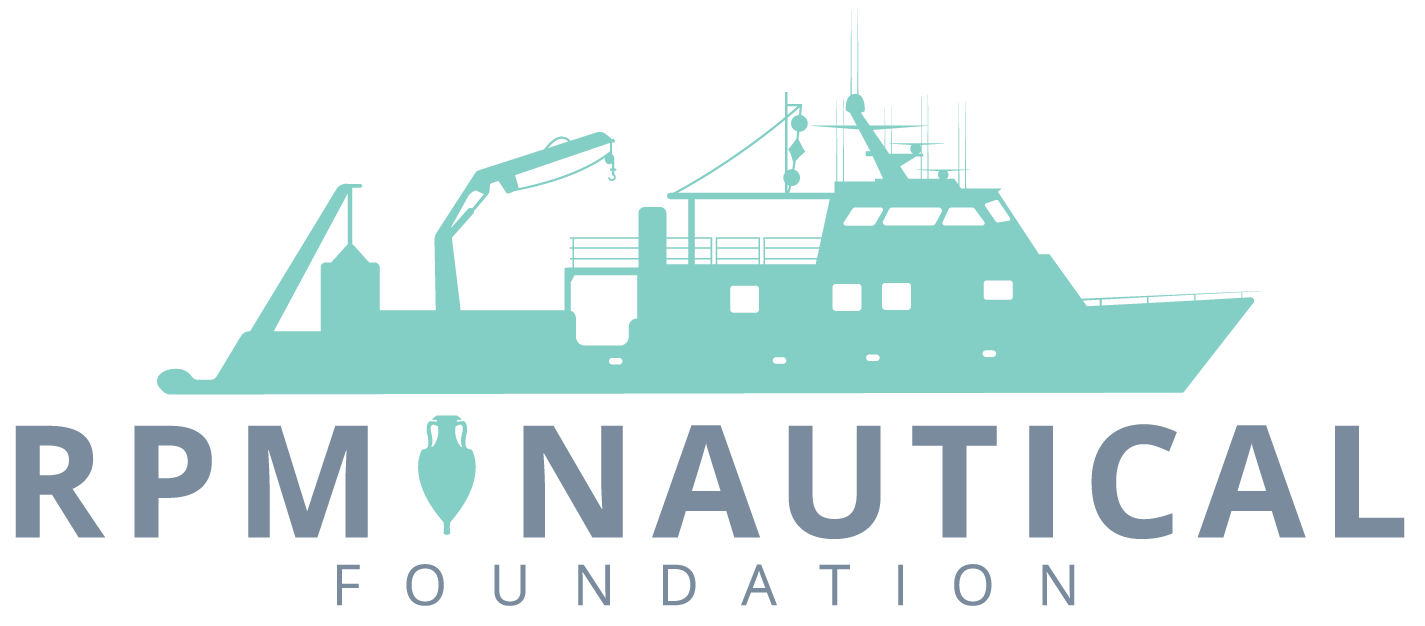A 4th-century AD merchantman in the service of the annona?
Between 2005 and 2009 a deep-water shipwreck was located, mapped, and partially excavated by a joint team from RPM Nautical Foundation and the office of the Soprintendenza del Mare, Sicily. Located off Levanzo Island, one of the Egadi Islands off north-west Sicily, this wrecked merchantman revealed a mixed cargo of foodstuffs, coarseware, glass, and construction materials. The nature of the wreck-site, its cargo, operational date, and find-location indicate its likely association with the annona service which supplied Rome.
Survey area and methodology
Based on historical routes and events, as well as recent finds in the vicinity, the area near Levanzo Island was the first survey objective. The Egadi Islands are situated along trade-routes which have connected North Africa, Sicily and Italy for millennia. Ancient settlements along the west coast of Sicily, such as Eryx, Drepanum, Motya, and Lilybaeum, served as trading centres within these regional networks. The three small Egadi Islands, which rise to over 150 m at their peaks, lie along the route between North African entrepots such as Carthage, and Rome, as well as the coasts of Campania, Basilicata and Calabria on the Italian mainland. Key historical events also make the seas around the Egadi Islands an important research area. In 241 BC Roman and Carthaginian fleets clashed here
in the final battle of the First Punic war. Polybius tells us that the Carthaginian fleet left the westernmost island, ancient Hera Maritima, en route for the coast held by the Carthaginians, north of Eryx, but was surprised by a Roman fleet anchored on the eastern side of Levanzo Island. Considering the west-to-north wind directions noted, the battle probably took place near Levanzo Island.
Recent finds by fishermen support this as a promising survey area; a bronze ram was pulled up by a drag-net fisherman somewhere north of the island in 2002, and a Roman bronze helmet recovered by a static-net fisherman to the west of the island. To date the Egadi Islands Survey Project (EISP) has recovered five additional bronze warship rams which will be featured in a future publication by the authors.
The principal survey methods are remote sensing with a multibeam echosounder and verification of anomalies with a Remotely Operated Vehicle (ROV). Both survey and verification were carried out with RPMNF’s research vessel Hercules. This is equipped with a hull-mounted EM3002D multibeam echosounder from Kongsberg Maritime division, which emits in excess of 500 individual sonar beams at a maximum rate of 40 times per second, on two frequencies, 297 and 303 MHz. The system has a depthresolution rating of 1 cm. The ROV is a Panther XT small work-class vehicle from Seaeye division of SAAB; among the attachments are an HD camera, two Hydro-Lek multifunction manipulators, and a suction system.
Overlapping survey lanes are run along the sea-floor contours to achieve 200% coverage. Multibeam data is processed during, and directly after, the collection phase to produce 3-D models of the sea-floor (acquired through Kongsberg’s SIS software, processed in CARIS HIPS/SIPS, and modelled in IVS Fledermaus). All acquisition and processing of data is performed by surveyors contracted from Highland Geo Solutions Inc. of Fredericton, NB, Canada. Anomalies are examined for association with either geological formations or deposits consistent with shipwreck-sites, and the latter are plotted in navigational and spatial recording software for verification. The RV Hercules is positioned over anomaly co-ordinates and the ROV deployed equipped with a transponder which allows
the tracking of both Hercules and the ROV within the 3-D models of the sea-floor in Fledermaus to obtain precise locations for sites and individual finds. During verification operations the locating of each anomaly, as well as stray material near anomalies and sites, is facilitated by a forward-scanning sonar fixed to the ROV. Once cultural material is located and positions recorded, a visual investigation is carried out using still and video cameras.
Each of the seasons from 2005 to 2010 entailed multibeam survey, anomaly verification, and/or site investigations. Multibeam survey took place during four field seasons: 2005 (17.5 km2), 2007 (118.3 km2), 2008 (12.3 km2) and 2010 (61.6 km2), a total coverage of 210.7 km2 (Fig. 1). Notable geological formations included large rock outcrops which produced shallow waters to the south and south-west of Levanzo Island, towards the north-west coast of Favignana Island. Most of the zone to the west of Favignana features open sandy stretches reaching depths of 60–85 m relatively quickly. The numerous rock outcrops in the deep western section of the survey area may continue further west. The Levanzo I wreck-site was discovered during ROV verification of anomalies in 2006; subsequent
visits to the site occurred in both 2007 and 2008. For the 2009 field-season the team focused solely on anomaly verification and work at the Levanzo I wreck. ROV verification efforts continued in 2010, along with a visit to the Levanzo I wreck-site to assess conditions.


 The Weapon That Changed History
The Weapon That Changed History